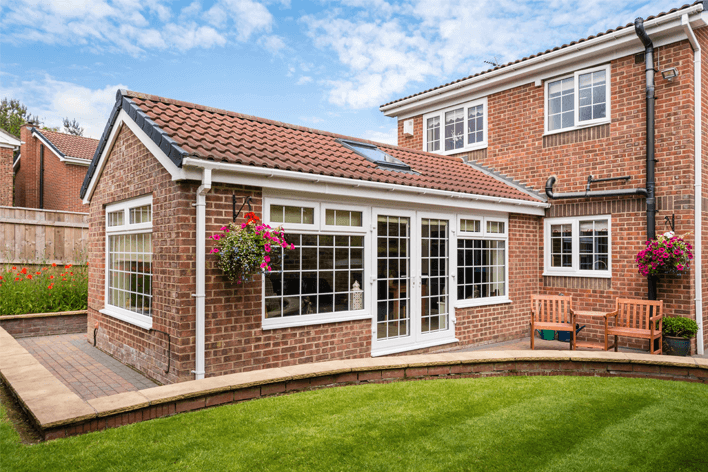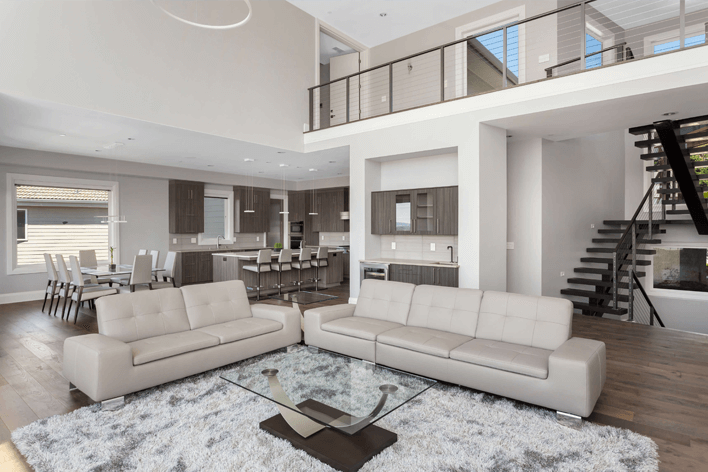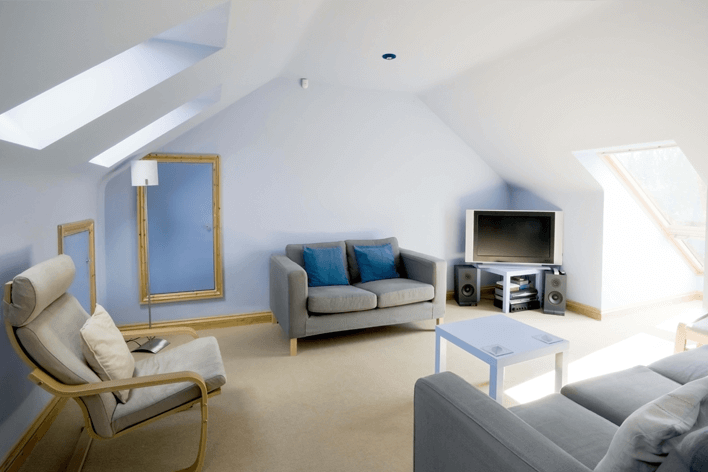Whether a buy-to-let investment or your main family residence, your property is probably your most valuable asset. You could potentially add value to your home by creating additional ‘living space’ which may also attract higher rental yields and longer-term profitability.
With the cost of new-build ever-increasing and the chance for the young to own their own home ever-decreasing, it makes sense to maximise your property’s potential. Be it additional bedrooms, bathrooms or enlarging the kitchen you can improve your or your tenants’ lifestyle and the value of your home or rental if you wish to sell later.
So here are some tips on what may be possible and what to look out for.
Up next: House Viewings For Buy To Let Landlords: Benefits Of Doing Your Own Viewings
Building outwards will add more living space.
Planning regulations have been relaxed over recent years and now ‘permitted development’ allows extensions on the side or rear of your property to be built without planning consent.

There are some limitations such as height and boundary conditions but they are not too onerous for single-storey extensions. You will still require Building Control permission but this can be easily granted if you stay within the Building Regulations concerning such areas as foundations, insulation and building materials, all of which you can get advice from a structural engineer.
Foundations need to go below a frost penetration depth of 1000mm and should be wide enough to carry the load in the ground conditions prevailing in your area (approximately 600mm). Your walls should be insulated and waterproof so you will not be using solid walls but a cavity wall where 2 skins of brick or block are separated by a space and tied together with brick ties. This space is then insulated with a fibre material to conform to the building regulations.
The roof of your external extension can be flat or pitched depending on your budget and desired appearance. Flat roofs are less expensive, pitched roofs more attractive. Both types need insulation and with flat roofs, this can be placed between the roof joists, with pitched roof between the rafters or ceiling joists.
Building internally could add value to your home
Again, planning permission is not required for internal work such as moving walls to create a more open living space but you must be careful of removing load-bearing walls and always get the advice of a Structural Engineer when doing so. S/he can design beam support for the structure above and supervise the works.

Open-plan is becoming more fashionable in this era and dining areas often include the kitchen area. By improving the ergonomics of eating and preparing food can allow the combined space to become more efficient and more acceptable. This can also include the living area for smaller families. For these reasons removing walls can be advantageous however from a resale perspective it is advisable to do your research on your local property market before embarking on this course.
To improve the lower floor aspects of your living area you may wish to build into an external wall a large patio door or bifold door to open views to your garden. This is possible for large widths of up to 6000mm without too much expense. A steel beam can be designed to support the wall above and there are clever ways of inserting that beam safely with the help of carefully placed temporary propping.
Read more: How To Attract Tenants – Top 5 Tips For Landlords
You could add value to your home with a loft conversion.
The unused space in your roof is the obvious target for increasing the floor area of your property but comes with several provisos;

First of all the roof has to have enough slope to give sufficient internal headroom, ideally, the slope should be around 45 degrees so that the ridge of the house is at least 2600mm above the attic floor.
Next is the existing roof structure of your home as modern homes are likely to have gang nailed lightweight roof trusses at closely spaced centres this is not ideal although not impossible for conversion.
Older properties will most probably have cut timber roofs, that is where the roof structure has been built on-site and not prefabricated as in the gang nailed trusses. Here one can alter the timbers by adding or reconfiguring the timber to allow for additional headroom within the attic before creating the external extension in the form of a dormer roof or flat roof.
Lastly, you must consider the access to this additional storey height as the stair must conform to the building regulations in terms of treads and risers and headroom.
Whatever space you need for the stair will be space that you lose on the second floor. So select carefully and try to choose areas that are of lesser importance to you, such as cupboard spaces or excess landing areas. Make sure that you can maintain a 2000mm headroom from the line of the stair tread nosing (the point where the tread and riser meet). You may need to design a dog-leg stair with a half landing or even include winding treads to save space.
The existing ceiling joists will not be strong enough to support the loading of domestic use so that new joists will need to be added or the existing ones strengthened with new supports.
Care must be exercised when building loft conversions that the existing roof structure is temporarily supported during the new construction as an alteration to the roof structure may have weakened its load-carrying capacity until it is fully combined with the new structure.
All of these options need careful consideration and advice from various bodies; letting agents to find out how much rent the property could achieve, reputable building contractors giving cost estimates and Structural Engineers on the viability of the extension/alteration and proposals for structural drawings and calculations to be submitted to building control.
If you are considering an extension, internal alteration or loft conversion, you may want to get a second opinion. Find a professional and get a free quote here.
With all of this in hand, you are well on your way to improving your property to give an added return on investment and comfort for the years to come.



